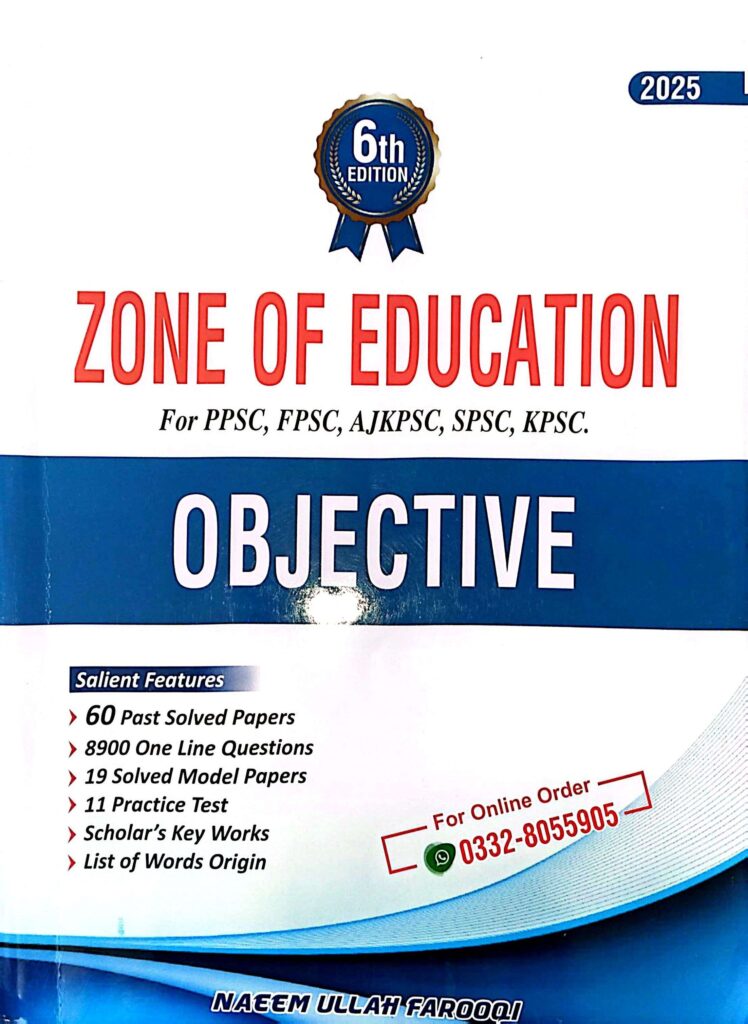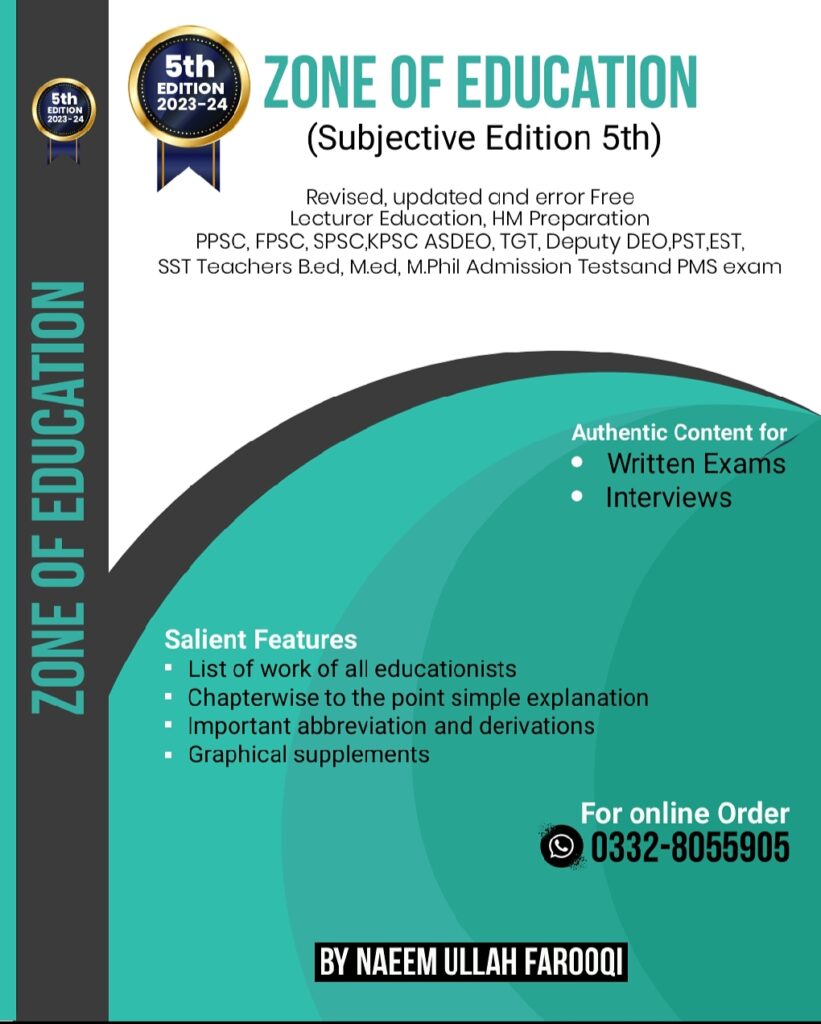Educational Research
.1. Observation is of:
(a) One type
(b) Two types
(c) Three types
(d) None of the above
2. Children are playing ‘Holi.’ You observe them by becoming a regular member of the group. This is known as:
(a) Direct observation
(b) Participant observation
(c) Conconitant observation
(d) Natural observation
63. ‘Structured’ and ‘Unstructured’ are two types of:
· (a) Observations
· (b) Introspection
· (c) Interview
· (d) None of the above
64. Closed form of Questionnaire means:
· (a) Yes or No response
· (b) A short response
· (c) Checking an item out of given responses
· (d) Restricts the choice of response for the respondent
68. A good Questionnaire is:
· (a) Significant, Novel, Clear Topic
· (b) As short as possible
· (c) Psychologically and biologically arranged
· (d) Easy to tabulate, summarize, and interpret
69. Condition for preparing a Questionnaire is:
· (a) Problem selected from one, and a half-times more items than needed
· (b) Take help from other studies, related literature, and experts in the related field
· (c) To explore hypotheses, to cover the whole topic, approval of authorities, related to some known educationists
· (d) To present a preliminary card asking whether the subject is willing to participate, and two copies of the Questionnaire
· (e) All of the above
70. The interpretation of data analyzed and the formulation of conclusions should take into consideration:
· (a) The percentage of responses focused
· (b) The smaller the percentage of responses
· (c) The lesser the reliability of the data collected
· (d) Both ‘a’ and ‘b’
71. Advantage of Questionnaire is:
· (a) Economical, Nationwide or International coverage
· (b) Easy to plan, construct, and administer
· (c) Confidential, Less strain, Focusing all the significant ideas
· (d) All of the above
Answer: (d) All of the above
72. The mass of data collected needs to be systematized and organized through:
· (a) Editing
· (b) Classifying
· (c) Tabulating
· (d) All of the above
Answer: (d) All of the above
73. Good Barr and Scates suggest a helpful mode to start with the analysis of data:
· (a) To think in terms of significant tables that the data permits.
· (b) To examine carefully the statement of the problem, earlier analysis, and to study the original record of the data.
· (c) To discuss the problems with others.
· (d) To make simple statistical calculations from the data.
74. Statistical method of analysis:
· (a) Ranks and percentile ranks, measures of central tendency.
· (b) Measures of variability—range, quartile deviation, average deviation, and standard deviation.
· (c) Correlation, co-efficient of reliability, and validity.
· (d) Error and probable error—difference or significant difference.
75. Common error of interpretation:
· (a) Failure to see the problem in proper perspective, to appreciate the relevance of various elements.
· (b) Failure to recognize limitations in the research evidence, misinterpretation due to unstudied factors.
· (c) Ignoring selective factors, difficulties, and interpretative evaluation.
· (d) All of the above.
Answer: (d) All of the above
76. The main purpose of research is:
· (a) To determine the status of the phenomenon, past and present.
· (b) To ascertain the nature, composition, and processes that characterize the phenomenon.
· (c) To trace growth, change, and developmental history and to study cause and effect relationships.
· (d) All of the above.
Answer: (d) All of the above
77. Common fallacy of reasoning leading to erroneous generalization:
· (a) Fallacy of non-observation and mal-observation.
· (b) Errors incidental to classification, nomenclature, and terminology.
· (c) Errors commonly arising out of the use of inductive methods, false analogies, including argument from final cause.
· (d) All of the above.
Answer: (d) All of the above
78. Hint in formulating generalization is:
· (a) To summarize the findings and compare them with the hypothesis.
· (b) Conclusions should be based on evidence of sound, adequate data, and must answer the questions asked in the problem.
· (c) Must prove or disprove the hypothesis, recognize the limitations of the study, and provide suggestions for application, implementation, and future investigation.
· (d) All of the above.
Answer: (d) All of the above
81. Main body of the research report includes:
· (a) Introduction—Statement, significance, and purposes.
· (b) Assumptions and delimitations, and assumptions underlying the hypothesis.
· (c) Definition of important terms, statement of hypothesis.
· (d) All of the above.
Answer: (d) All of the above
82. Main body of the research report has:
· (a) Review of related literature, design of the study procedure, and method and description of data gathering.
· (b) Presentation and analysis of data—text, tables, figures.
· (c) Summary and conclusions—brief restatement of problem and procedures, description of procedures used, findings, conclusions, and recommendations for further research.
· (d) All of the above.
Answer: (d) All of the above
83. Reference section of a research report includes:
· (a) Bibliography.
· (b) Appendix.
· (c) Index if any.
· (d) All of the above.
Answer: (d) All of the above
84. Projective technique is used for measuring:
· (a) Individual’s need for self-actualization.
· (b) Individual’s inventoried interests.
· (c) Individual’s dominant feelings, emotions, conflicts, needs, repressed and stored up in the unconscious mind.
· (d) Individual’s value-system.
Answer: (c) Individual’s dominant feelings, emotions, conflicts, needs, repressed and stored up in the unconscious mind
85. Which is not a projective technique?
· (a) Rorschach
· (b) TAT (Thematic Apperception Test)
· (c) Sentence-Completion Test
· (d) Maudsley Personality Inventory (MPI)
Answer: (d) Maudsley Personality Inventory (MPI)
86. Importance of Projective tests lies in:
· (a) They reveal deeper layers of personality, i.e., emotions, conflicts, feelings, etc.
· (b) Reliability and validity.
· (c) Indirect methods of knowing and the potentials of a person.
· (d) Non-verbal and can be used even in case of illiterates and children.
Answer: (a) They reveal deeper layers of personality, i.e., emotions, conflicts, feelings, etc.
87. Technique for measuring interpersonal relationships is known as:
· (a) Psychogram
· (b) Psychodynamics
· (c) Sociogram
· (d) Scalogram
Answer: (c) Sociogram
88. Not measured by the TAT test is:
· (a) Personality needs
· (b) Personality adjustment
· (c) Reasoning ability
· (d) Emotions
Answer: (c) Reasoning ability
89. Which of the following is a projective test?
· (a) Alport-Vernon-Lindzey—A study of values
· (b) Rorschach Test
· (c) Edwards Personal Preference Schedule
· (d) Minnesota Multiphasic Personality Inventory (MMPI)
Answer: (b) Rorschach Test
90. A projective technique uses:
· (a) A short structured interview schedule
· (b) Unstructured stimulus situations such as ink-blots, photographs, etc.
· (c) On the spot participants observations for measuring an individual’s qualities
· (d) Direct observations of a person’s behavior
Answer: (b) Unstructured stimulus situations such as ink-blots, photographs, etc.
·
92. Which of the following projective technique includes—Ten ink blots—Five in black and white, two with splashes of red, and three in other colors, printed on 7″ x 9.5″ cards?
· (a) Rorschach Test
· (b) Thematic Apperception Test (TAT)
· (c) Both ‘a’ and ‘b’
· (d) Neither ‘a’ nor ‘b’
Answer: (a) Rorschach Test
93. In Thematic Apperception Test (TAT), the psychologist asks questions like:
· (a) What does the picture mean to the subject?
· (b) What can be the factors that have led to the situation?
· (c) What will be the outcome?
· (d) All of the above.
Answer: (d) All of the above
94. One major limitation of the projective test is that:
· (a) Individual tests
· (b) Not reliable and valid
· (c) Require highly specialized training in the administration, scoring, and interpretation of these tests
· (d) Very costly
Answer: (c) Require highly specialized training in the administration, scoring, and interpretation of these tests
95. Opinionaire is defined as a special form of inquiry to collect:
· (a) The opinion of a sample of population on certain facts
· (b) To quantify, analyze, and interpret the collected data
· (c) Both ‘a’ and ‘b’
· (d) Neither ‘a’ nor ‘b’
Answer: (c) Both ‘a’ and ‘b’
96. Opinionaire uses, which of the following for soliciting responses:
· (a) A three-point scale (agree, undecided, and disagree)
· (b) A five-point scale (strongly agree, agree, uncertain, disagree, and strongly disagree)
· (c) Both ‘a’ and ‘b’
· (d) Neither ‘a’ nor ‘b’
97. Sociometry is a technique for describing:
· (a) Social relationships that exist between members of a group
· (b) Attractions or repulsions between individuals
· (c) Both ‘a’ and ‘b’
· (d) Neither ‘a’ nor ‘b’
Answer: (c) Both ‘a’ and ‘b’
98. Data received in response to the choice situations provided is tabulated in the form of a:
· (a) Sociograph
· (b) Sociometric matrix
· (c) Neither ‘a’ nor ‘b’
· (d) Both ‘a’ and ‘b’
99. Sociometric choices may be represented graphically on a chart known as:
· (a) Sociogram
· (b) Scalogram
· (c) Both ‘a’ and ‘b’
· (d) Neither ‘a’ nor ‘b’
Answer: (a) Sociogram
100. The sociometric technique is closely identified with:
· (a) Helen Jennings and J.L. Moreno
· (b) P.V. Young
· (c) Henry A. Murray
· (d) None
Answer: (a) Helen Jennings and J.L. Moreno
JOIN ZONE OF EDUCATIONPK!
Discover the most comprehensive and reliable pedagogy resources in Pakistan, curated for competitive exam success. Our content covers all competitive exam MCQs, including PPSC, FPSC, AJKPSC, SPSC, and more. Designed to empower learners with top-notch material and insights, trust us for your preparation journey!


